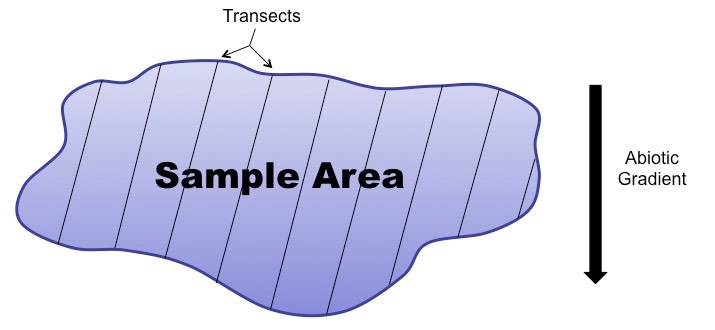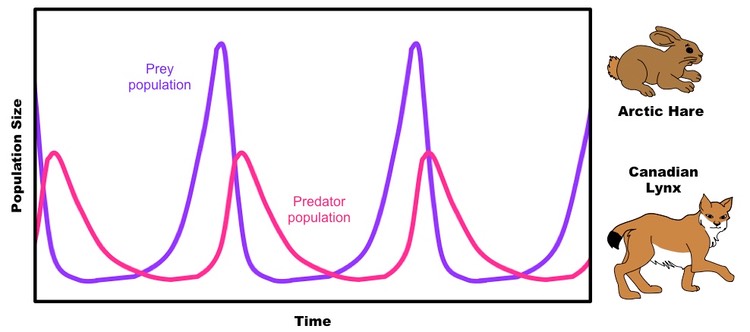G.1.1 Outline the factors that affect the distribution of plant species, including temperature, water, light, soil pH, salinity and mineral nutrients
All plant species are restricted to certain geographical areas and particular habitats according to certain abiotic conditions
- Climatic factors relate to atmospheric conditions while edaphic factors relate to changes in the soil environment

G.1.2 Explain the factors that affect the distribution of animal species, including temperature, water, breeding sites, food supply and territory
Temperature:
- Temperature must be within a viable range (based on adaptations) for survival – few animals can survive extreme temperature conditions
- Homeotherms can colonise a wider range of habitats than poikilotherms (for which habitat is determined by external temperatures)
- Body size (specifically SA:Vol ratio) will determine an animal's ability to conserve heat
Water:
- Water must be available in species-specific quantities (larger animals will have greater water requirements)
- Dissolved oxygen levels and salinity will determine the survival of aquatic organisms
Breeding Sites:
- Breeding sites are required for the maintenance of the species – sites where infants are reared may have specialised environmental requirements
- Food resources and protection from predators will play a significant role in the viability of a species
Food Supply:
- The availability of food is a critical determinant of the carrying capacity of a population (i.e. maximum population size)
- The food supply must be of the right kind for the species (e.g. nuts for squirrels and leaves for rabbits) or else habitation is limited
Territory:
- Some animals establish and defend an area for the purposes of attracting mates, rearing young and avoiding predators
- If territory is limited, it can lead to either intra-specific (within species) or inter-specific (between species) competition
- A territory may be established by either an individual, breeding couples or groups and may be either temporary or permanent
G.1.3 Describe one method of random sampling, based on quadrat method, that is used to compare population size of two plant or animal species
- A quadrat is a rectangular or circular frame of known area that is used to establish population densities
- An area is defined and the quadrat is randomly placed inside (creating random number tables based on grids can reduce human bias)
- The number of individuals of a given species within the quadrat is counted and then the process is repeated for different areas
- Smaller quadrats must be placed more times than larger quadrate, but enough samples must be collected to make it representative
- The population density is the number of individuals counted for a given species divided by the area used
- Plants may be difficult to individually count, but an estimation of percentage ground coverage can be used as an alternative
- Care must be taken when counting animal species to ensure their movements do not result in the repeated sampling of the same animal

G.1.4 Outline the use of a transect to correlate the distribution of plant or animal species with an abiotic variable
- When there is a gradient in an abiotic factor (e.g. salinity, elevation, etc.), communities will show variation in response to this trend
- A transect is a path along which the distribution of a plant or animal species can be observed and recorded
- The transect is placed at right angles to the impact of the abiotic gradient so as to display the change in distribution in response to the factor
- Line transects involve laying out a length of string and counting individuals at certain intervals along the line
- Belt transects involve placing quadrats at various intervals and counting the density of the population at each interval

G.1.5 Explain what is meant by the niche concept, including an organism's spatial habitat, its feeding activities and its interactions with other species
An ecological niche describes the role of an organism within its ecosystem, including the precise conditions the organism needs to survive:
- Spatial habitat – including the abiotic factors of the environment and the set of all ranges of limiting factors an organism tolerates
- Feeding activities – including what the species eats and how it obtains its food
- Interactions with other species – including predator-prey and mutualistic relationships
G.1.6 Outline the following interactions between species, giving two examples of each: competition, herbivory, predation, parasitism and mutualism
Competition
Competition is the interaction between two organisms striving for the same resource in the same place due to overlapping niches
Competition can be either interspecific (between two different species) or intraspecific (within a single species)
- Example 1: Red foxes and coyotes compete for food (e.g. rabbits) within the grasslands of the United States
- Example 2: In the UK, the natterjack toad and the common toad compete for the same habitat (coastal dunes)
Herbivory
Herbivory involves a primary consumer (herbivore) feeding on a producer (plant)
- Example 1: Rabbits eat marram grass in a sand dune ecosystem
- Example 2: Leaf monkeys (langurs) feeding on fig trees
Predation
A predator is a consumer feeding on another consumer (prey)
The number of predators will affect the number of prey, to create a cyclic interaction
- Example 1: The Canadian lynx feeds on the arctic hare
- Example 2: Tigers feed on wild pigs in the Thai rainforests
Parasitism
A parasite is an organism which lives on or in a host and depends on the host for at least part of its survival to the harm of the host
- Example 1: Plasmodium is a parasite which spends part of its life cycle in a human host and causes malaria (endoparasite)
- Example 2: Leeches will puncture the skin of a host and feed on its blood, releasing an enzyme to prevent blood clotting (ectoparasite)
Mutualism
A mutualistic relationship involves two species living together in an arrangement where both species benefit
- Example 1: Clownfish are covered in mucus which protects them from sea anemone tentacles – they draw food to anemones and feed on remains
- Example 2: Lichen is a mutualistic relationship between algae and fungi – algae photosynthesise and make sugars, fungi absorb minerals
Predator-Prey Relationships

G.1.7 Explain the principle of competitive exclusion
- The principle of competitive exclusion is based on the idea that ecological separation of species in competition is an inevitable outcome
- All species occupy a niche, which describes the roles of the organism within an ecosystem
- No two species can occupy the same niche in a community, as there will be competition for the same resources
- Species either segregate within a habitat (resource partitioning), or one species numbers will increase and the other die off (competitive exclusion)
- The principle of competitive exclusion can be summarised by Gause's Law – complete competitors cannot coexist
Competitive Exclusion of Two Cultures of Paramecium

G.1.8 Distinguish between fundamental and realised niches
A fundamental niche is the potential mode of existence of a species (what can theoretically occupy based on adaptations)
The realised niche is the actual mode of existence of a species (what the species actually occupies based on limiting factors)
- The realised niche is often smaller than the fundamental niche and the difference is due to competition and predation
G.1.9 Define biomass
Biomass is the total dry organic matter of living organisms or ecosystems
G.1.10 Describe one method for the measurement of biomass of different trophic levels in an ecosystem
The process of measuring the dry organic mass kills the organisms, making it a costly and ethically questionable activity
- Step 1: Collect a representative sample and sort into trophic levels
- Step 2: Organisms in sample is cleaned of excess material (e.g. plants pulled free of soil and roots washed)
- Step 3: Measure the wet mass of the sample
- Step 4: Dry sample in an incubator (~80ºC) – sample considered completely dry when there is no further change in mass
- Step 5: Measure the mass of each sample to determine biomass of trophic level